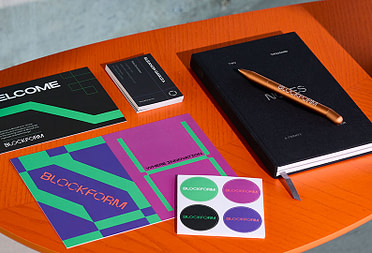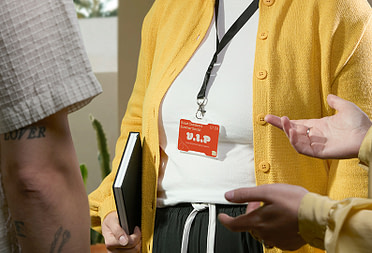Confidence-boosting public speaking tips for entrepreneurs
Speaking in public is an art anyone can master. From dress code to practicing opportunities, here’s a guide to getting started.

Growing your business could be as simple as standing up and speaking in public more often. From how to dress to where to put your hands, here’s our guide.
Speaking at events and conferences is a great way to grow your business. As well as bringing brilliant opportunities to network, it can give you a platform to promote yourself and your brand.
We understand that it can be a little daunting at times though – so, if you’re not a fan of taking the stage at conferences and events, here are some public speaking tips to overcome the nerves – you’ll be a pro in no time.
Start small, think big
So, you’re probably thinking, “where do I start?”. Well, the good news is, no-one plunges in straight away with a Ted Talk so start small. Think about all the times you’ve done public speaking without even realizing it. Perhaps you’ve chaired a meeting, introduced someone at an event or proposed a toast at a party? All of these things are great examples of public speaking, and a brilliant place to start. Speaking at events where the stakes aren’t as high will really help you to build up your confidence gradually, work out what techniques work for you and where the areas for improvement are.
What to wear
If you’ve found a public speaking engagement, the chances are that your thoughts will soon turn to what you’re going to wear for the big event.
On the one hand, you want to look authoritative, professional and camera-ready. On the other hand, you want to look authentically you – and you definitely don’t want to be restricted by tight neckties or uncomfortable high heels when you’re already feeling a little nervous on stage.
Then there’s the question of what your outfit says about you, and what kind of impression it will make on the audience – will your personal appearance be in tune with your message?
Dress for comfort
Sadly, taking the stage in pyjamas is a no-no, but you can still feel at ease in front of an audience. Strike a balance by choosing good quality clothes with classic but roomy styles. Your clothes should give you a good range of movement and not cling or rub during your speech delivery.
It’s a good idea to pick items you’ve worn in the past and know you are comfortable in. Natural fabrics tend to be more breathable than synthetic ones, and can help you stay cool and comfortable – a must if you’re prone to stage fright. Look for cotton, linen or light wool fabrics in your wardrobe.
Dress for your brand
Dress is a powerful form of non-verbal communication. You’ll make your first impression before you even say a word. Along with your body language, eye contact and facial expression, your clothes have a big role to play in forming an audience’s opinion of you.
A plain suit in dark colors is a classic choice that places the emphasis on your words, not your looks. But play it too straight and it could be a missed opportunity to stand out. A splash of bright color, such as a shirt, scarf or tie, can add a memorable edge to an outfit.
Personal grooming is also very expressive. Think about whether you want to look polished or casual, what kind of hairstyle or facial grooming you want to do, or whether to wear makeup – and if so, if it’s going to be a classic and natural look or a striking statement.
Three things to check before you go on stage:
1. Smile
Practice a quick smile in the mirror and make sure there’s no salad caught between your front teeth!
2. Hair
Make sure your hair is neat and there are no stray tufts or strands sticking out of your hairdo.
3. Mic
If you’re wearing a body mic, check that it hasn’t affected the line of your outfit or pulled anything out of place
How to prepare your speech in 3 steps:
Step 1: Create a structure
It’s important to prepare a framework for your talk or presentation so that you can plan out what you’re going to say and how you’re going to deliver it – but don’t write yourself a script and try to learn it off by heart.
Think back to a time where you sat through a scripted speech or talk – did you actually take any of it in? Scripting your delivery means you could run the risk of coming across very flat – it could lose the inflection and tone that makes you sound genuine, allowing you to fully connect with your audience.
Daniel Kingsley of Presence Training, a company that runs public speaking courses in London recommends a six-point structure:
- Open with something personal to grab their attention
- Tell them what the talk is going to be about
- Name three main points
- Elaborate on the main three points
- Summarize the three main points
- Find an entertaining or emotionally powerful way to end the talk. Even better if it references how you started the talk, as this is emotionally satisfying
Step 2: Make prompts
If you’re not presenting visually, you may want to make yourself some prompts on Postcards to help keep you on track. It’ll take pressure the off of having to remember every fact, as well helping to remember the order and flow of what you’re presenting. Having notes can provide a security blanket – of course, it’s great if you don’t need them, but if you happen to lose your place or forget what you wanted to say, a quick glance at your notes will put you right back on track.
Remember the following when preparing your prompts:
- Jot down key phrases or headlines – don’t write in full sentences – your notes are there to jog your memory
- Make sure your notes are easy to read – write larger than you would usually and leave space between each point
It’s ok to look at your notes – and your audience won’t mind! And, if you do need to look at them, do so in a deliberate manner. Break eye contact with your audience, look at your notes and take the time to absorb your next point. When you’re ready, re-establish your eye contact and deliver that section. The pause may seem long to you, but it won’t to your audience.
Step 3: Practice
Practice your talk before the big day. Go through it in front of friends or family, preferably ones who’ll be honest, and not too brutal! Video yourself and play it back, noting down any improvements you need to make.
If you feel like you need more public speaking practise in general, take advantage of any opportunities to practice public speaking with others.
It’s a great idea to see if there is an active Toastmasters International club in your region. This organization teaches leadership and public speaking, and is known as a tried and trusted way to start public speaking with ‘training wheels’ on.
Pecha Kucha is another international organization that holds public speaking events in cities. Talks can be on almost any subject, but are limited to 20 slides, each shown for 20 seconds only, so your speech will be concise and focused.
If you don’t have anything available locally, there’s always online public speaking practice. A quick search will connect you with sites like Pspeak and The Public Speaking Project, which give you opportunities to learn public speaking techniques and try them out with exercise or webcam-based practice.
Of course, for some people practicing in private is more comfortable, and that can be just as valuable if it helps build your confidence. Whether you practice in front of the mirror, or record yourself with the selfie camera on your phone, putting the time in to learn and improve is what matters.
What if your mind goes blank?
Once your preparation is done, your mind will probably shift to thinking about the day itself and whether your delivery is going to go to plan. It’s totally normal to be nervous and there are some really simple things that you can do to help overcome the nerves.
It’s all in the preparation. Whilst we don’t recommend trying to learn your whole presentation off by heart, it can really help to memorize just the first 30 seconds. This will help you to deliver a strong start, allowing you to really getting into your stride. Once you get over the initial hurdle and land the first part of your speech, it can really help to build your confidence, strengthening the rest of your delivery.
Just remember, mistakes are normal and usually, audiences don’t even notice them. Have some water to hand in case your throat feels dry – taking sips can also give you time to collect your thoughts.
Use body language when public speaking
Most of the time, you walk, talk, stand and move around without thinking too much about it. But once you step on stage in front of a live audience, it’s typical to feel like you’ve got two left feet and about three extra arms you don’t know what to do with. The combination of performance anxiety and knowing there are eyes – and cameras – trained on you from all sides can result in your movements and posture becoming stilted and uncomfortable-looking, which can detract from your message.
Body language can be your greatest public speaking asset, but you need to know how to control it so that you’re giving out positive, confident vibes rather than nervous ones.
Audiences respond best to speakers whose body language doesn’t distract from what they’re saying, but reinforces the message with expressive gestures and facial expressions.
To get yourself tuned in to body language and start thinking about the kind of gestures and posture you want to use on stage, the Institute of Public Speaking recommends watching your favorite TV show with the sound muted so you can observe what kind of impression different gestures make.
Where to look
With so many faces in front of you, it can be hard to know where to look. Building a relationship with an audience isn’t about trying to look everyone in the eye, but it’s good to keep your eyes front and off your notes as much as possible if you want to hold people’s attention.
Having good eye contact with your audience will help them to feel more connected to you, and what you’re saying. When speaking to a room of more than 30, find 3 or 4 people at different points in the room and split your gaze between them as you speak. This can also help you to gauge whether your audience are keeping up with you, whether you need to slow down a little or explain things in a little more detail.
Alternatively, if you don’t feel comfortable addressing people in the room, you could find a couple of objects, like a sign or ornament, to speak to. Apply the same technique as you would if you were speaking to people – split your gaze, moving around the room. Just don’t fix your gaze on the back of the room – you’ll seem distant and may look like you want to escape.
And remember, blank faces are normal – so if you do catch someone’s eye and they don’t look exactly rapturous, don’t take it personally.
What should you do with your hands?
The majority of us talk with our hands when we’re in conversation and this should be no different when public speaking. In fact, gestures can actually help to reaffirm what you’re saying, getting your point across. So, do what comes naturally to you. We really like the tips in this article too.
If you have access to a lectern, this can also be really helpful as it gives you somewhere to rest your hands should you need it. You can also leave your prompt cards (if you have them) on your lectern leaving your hands free. You may find this helps to counteract your nerves, stopping you from playing around with your cards and shuffling them in your hands.
Props can be useful to illustrate a point or if you want to show one of your products. A good trick is to hold up your prop for several seconds before saying anything. It allows everyone to take a good look at it and builds anticipation.
The best posture for public speaking
- Stand upright, with your ears, shoulders and hips in a vertical line. Aim to look alert and lively, but not like you’re standing to attention.
- Keep your shoulders down and back, creating an open, relaxed posture. Try not to hunch forward.
- Keep your movements smooth and relaxed. Some physical motion, like hand gestures and moving from one side of a stage to another, can add dynamism to your speech, but avoid looking fidgety or hyperactive by pacing around or tapping your toes or fingers.
Engaging your audience while public speaking
Just because you’re on the stage and your audience is sitting listening doesn’t mean you can’t form an authentic connection with them. You can make your audience feel more engaged using some simple techniques.
Interact with the audience
This can be as simple as asking the audience questions related to your speech and getting them to raise their hands in response. Asking for their input like this makes them feel that they have a role in your talk and are contributing meaningfully. Discuss the results of your impromptu audience poll as you continue with your talk, and for extra value, try referencing the interaction again at the end, with a phrase like ‘as you’ve indicated during that quick poll…’
Use your presentation deck as an engagement tool
Your presentation slides give you a whole extra visual dimension to play with. Use tools like visual puns, cultural references – think topical memes or public figures – graphs, charts and illustrations to add to your talk’s interest-factor.
Try digital interaction
Invite your audience to use their mobile devices to comment on your talk and extend its reach onto social media. Adding a hashtag to your slides can help get people live tweeting and quoting from your speech during the event. You can also use tools like ShakeSpeak to let audiences vote on questions and display results on your presentation screen in real time.
Here are a few more public speaking tips for engaging your audience and keeping their attention.
Ready to start public speaking? Find a local meetup and put your skills to the test – don’t forget your Business Cards
Keep in touch
Get design inspiration, business tips and special offers straight to your inbox with our MOOsletter, out every two weeks.












